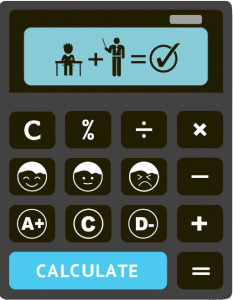Overview
Welcome to the intriguing world of shapes in year 6 maths! Shapes are all around us, and understanding their properties and classifications is not only fascinating but also essential for various fields, including architecture, design, and even problem-solving. In this article, we will dive into the enchanting realm of shapes and their characteristics. Let’s embark on this geometric journey together!
Learning Outcomes
By the end of this article, you will:
- Identify and define basic shapes, including triangles, quadrilaterals, polygons, circles, and ovals.
- Understand the concepts of line symmetry and rotational symmetry.
- Explore the different parts of a circle and their relationships.
- Discover the classification of triangles based on sides and angles.
- Comprehend the angle sum of a triangle.
Basic Shapes
Shapes are the building blocks of the geometric world. Let’s start by exploring some fundamental shapes you will encounter in year 6 maths:
| Shape Name | Triangle | Quadrilateral | Pentagon | Hexagon | Heptagon | Octagon | Decagon |
|---|---|---|---|---|---|---|---|
| Number of sides | 3 | 4 | 5 | 6 | 7 | 8 | 10 |
A circle is a perfectly round shape with no corners or edges.
An oval, also known as an ellipse, is an elongated circle.
The figure below shows some of the shapes named above.
Regular and Irregular Shapes
Shapes can be classified as regular or irregular. Regular shapes have sides that are equal in length and angles that are equal in measure. Irregular shapes, on the other hand, have sides and angles that vary in length and measure. Understanding these distinctions will help you analyze and categorize shapes accurately.
Line Symmetry and Rotational Symmetry
Think about the letter ‘A’. If you draw a vertical line right through its middle, you see the same shape on both sides – left and right, right? ;-)
Now, think about the letter ‘C’. If you draw a horizontal line right through its middle, you see the same shape above and below it, right?
Such shapes that can be split into two identical parts that are mirror images of one another are said to have line symmetry. The line that splits the shape into identical parts (or the ‘mirror’) is called the line of symmetry.
Rotational symmetry, on the other hand, refers to the property of a shape appearing unchanged after a certain rotation. Imagine a shape that looks the same after being rotated by a specific angle. Think about the letter ‘O’. If you rotate it, it still looks the same. Therefore, it is said to have rotational symmetry.
Questions: Can you think of any objects in your surroundings that possess line symmetry or rotational symmetry? How many lines of symmetry does a square have? What about a circle?
Parts of a circle
A circle has several distinct components that contribute to its unique properties:
- Centre: The centre of a circle is the point equidistant from all points on it.
- Radius: The radius is the line segment connecting the centre of the circle to any point on it.
- Diameter: The diameter is a line segment that passes through the centre of the circle, connecting two points on it. It is twice the length of the radius.
- Semi-circle: A semi-circle is half of a circle created by cutting it along the diameter.
- Quadrant: A quadrant is one-fourth of a circle, created by dividing it into four equal parts.
- Chord: A chord is a line segment that connects any two points on the circle.
- Circumference: The circumference is the distance around the outer edge of a circle.
- Arc: An arc is a part of the circumference of a circle.
- Segment (Major and Minor): A segment is a region enclosed by a chord and the arc of a circle. A major segment is larger than a semicircle, while a minor segment is smaller.
- Sector: A sector is a region enclosed by two radii and the arc of a circle.
Types of Triangles
Triangles, with their three sides and three angles, offer a fascinating world of their own. They can be classified based on their sides and angles:
Equilateral triangle: An equilateral triangle has three equal sides and three equal angles of \(60^{\circ}\) each. Why \(60^{\circ}\)? We will get to that in a bit.
Isosceles triangle: An isosceles triangle has two equal sides and two equal angles.
Scalene triangle: A scalene triangle has no equal sides or angles.
Right angled triangle: A right angled triangle has one right angle, measuring exactly \(90^{\circ}\).
Acute angled triangle: An acute angled triangle has three acute angles, each measuring less than \(90^{\circ}\).
Obtuse angled triangle: An obtuse angled triangle has one obtuse angle, measuring more than \(90^{\circ}\).
Angle Sum of a Triangle
In any triangle, the sum of the three angles always equals 180 degrees. This fundamental property holds true regardless of the type or size of the triangle. So, if you know the measure of two angles, you can easily find the measure of the third angle by subtracting the sum of the known angles from 180 degrees.
Does that explain why each of the three angles in an equilateral triangle measures \(60^{\circ}\)? Think!
Wrap Up
Congratulations on exploring the captivating world of shapes in year 6 maths! Understanding shapes opens doors to a plethora of mathematical concepts and applications. From analyzing symmetrical properties to investigating the angles of triangles, your knowledge of shapes will continue to expand as you progress in your mathematical journey. If you ever need further assistance or want to explore more intriguing topics in year six maths, do not hesitate to contact us. Keep exploring and embracing the wonders of mathematics!












